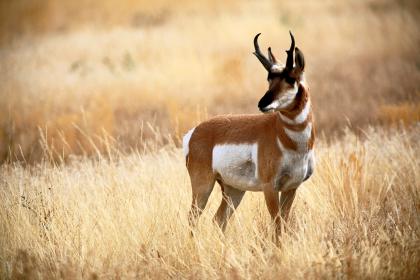The pronghorn is one of Texas’ great big game animals that was once found across the state, except for the piney woods of East Texas. And although most hunters refer to this species as antelope, pronghorn is the proper name. Although pronghorn numbers were once a big part of Texas hunting, they have declined because of habitat loss over the past 150 years and now it seems that decline has kicked in high gear.
In an effort to investigate an alarming and unexplained decline of pronghorn in far West Texas, the Texas Parks and Wildlife Department (TPWD) has awarded a 3 year $111,210 grant to the Borderlands Research Institute for Natural Resource Management at Sul Ross State University. The goal of the pronghorn project is to identify possible causes for the declining pronghorn herds and to evaluate two competing hypothesis regarding pronghorn survival and productivity.
Wildlife populations, especially those found in deserts, tend to increase and decrease in relation to habitat conditions. Nowhere is that more evident that in the desert Southwest and the Trans-Pecos region of Texas. Pronghorn numbers across this region have been dwindling since the drought of the 1990s. As expected, once the drought broke, pronghorn and other wildlife populations began to respond with increased reproduction and survival.
However, during the past three years when rainfall provided adequate habitat (food, cover, and water), pronghorn populations have plummeted, and pronghorn hunting in Texas has suffered along beside them. In 2010, pronghorn population estimates in the Trans-Pecos are the lowest since the 1970s with an estimated 4,713 pronghorn across the region. That does node bode well for Texas pronghorn, so let’s hope this study give biologist more information on managing these prairie-loving animals.
